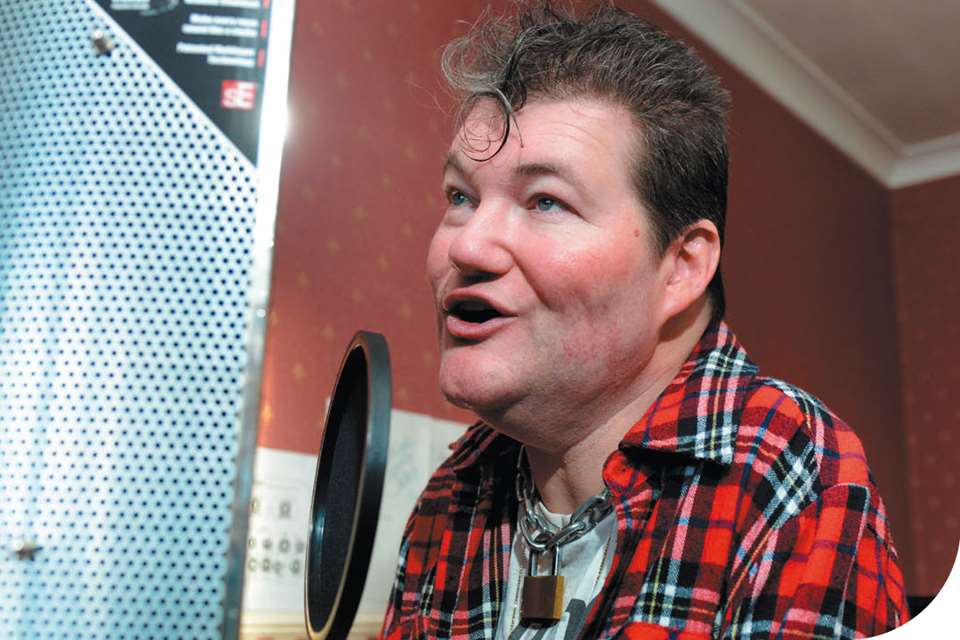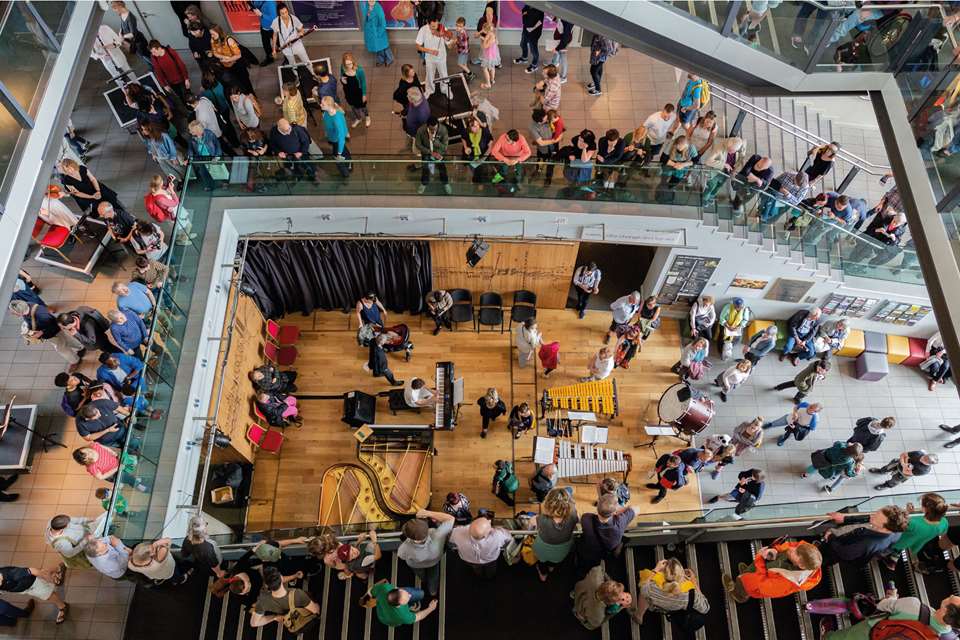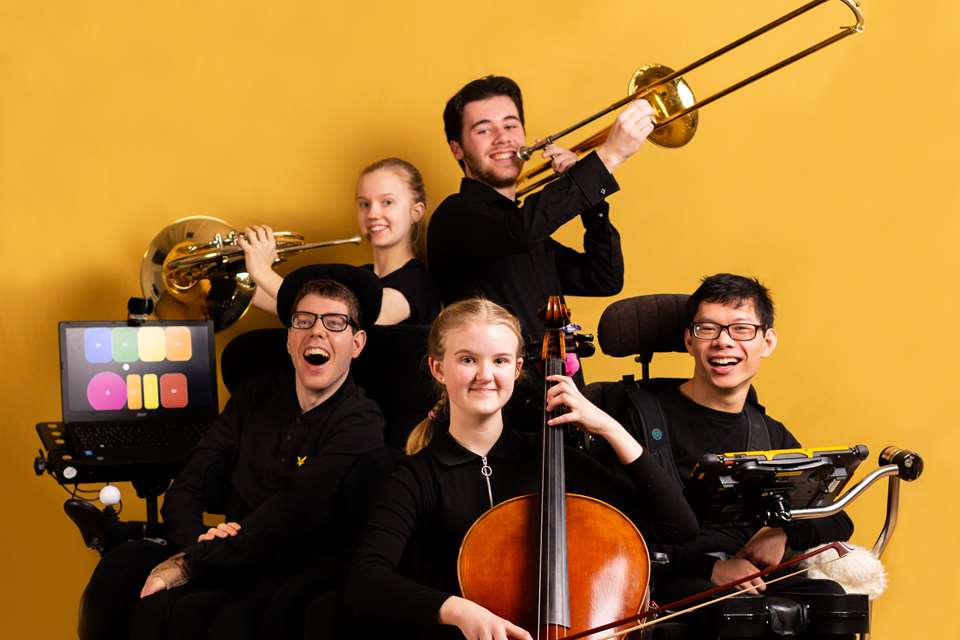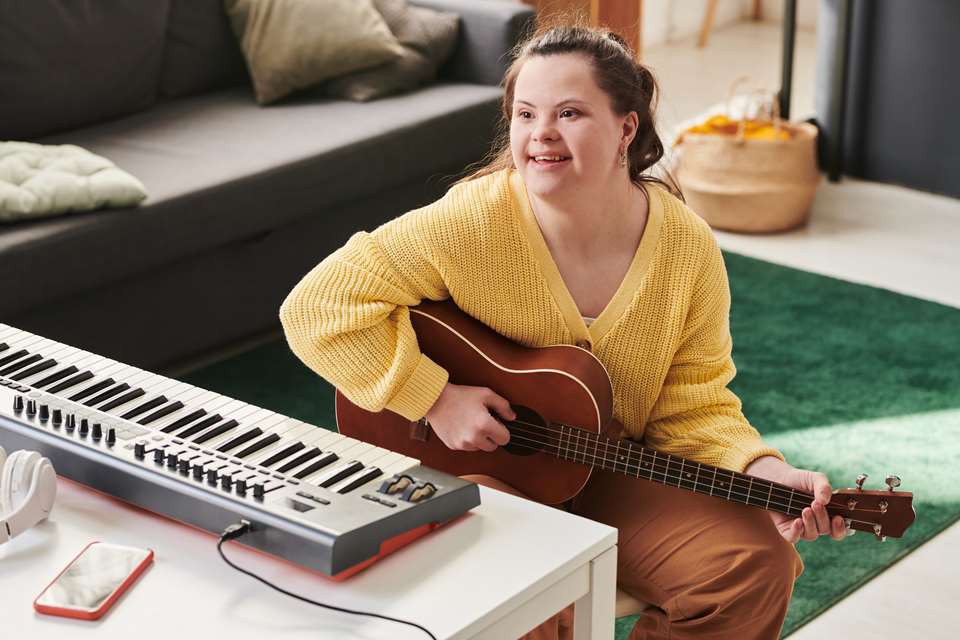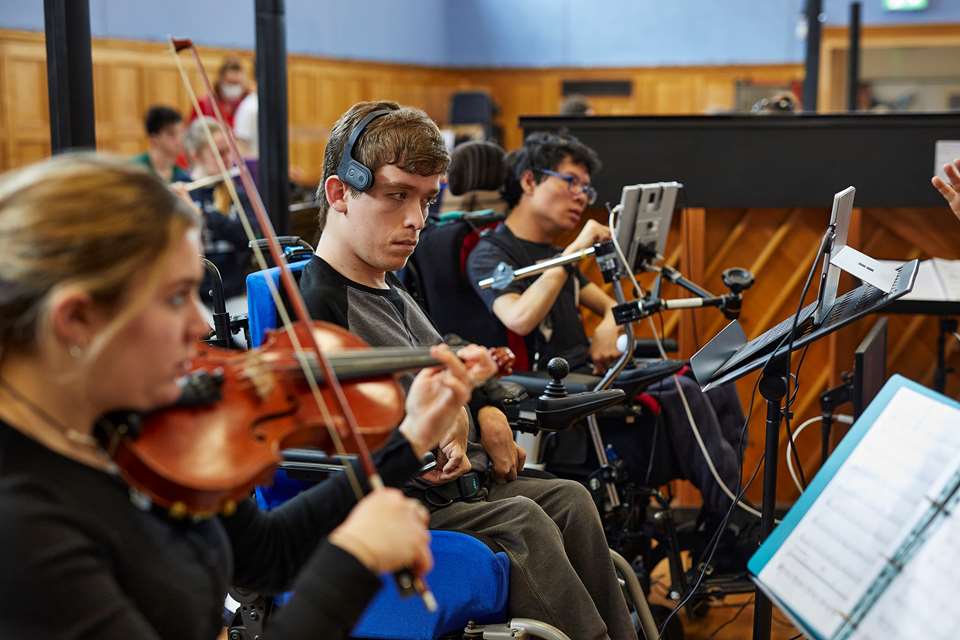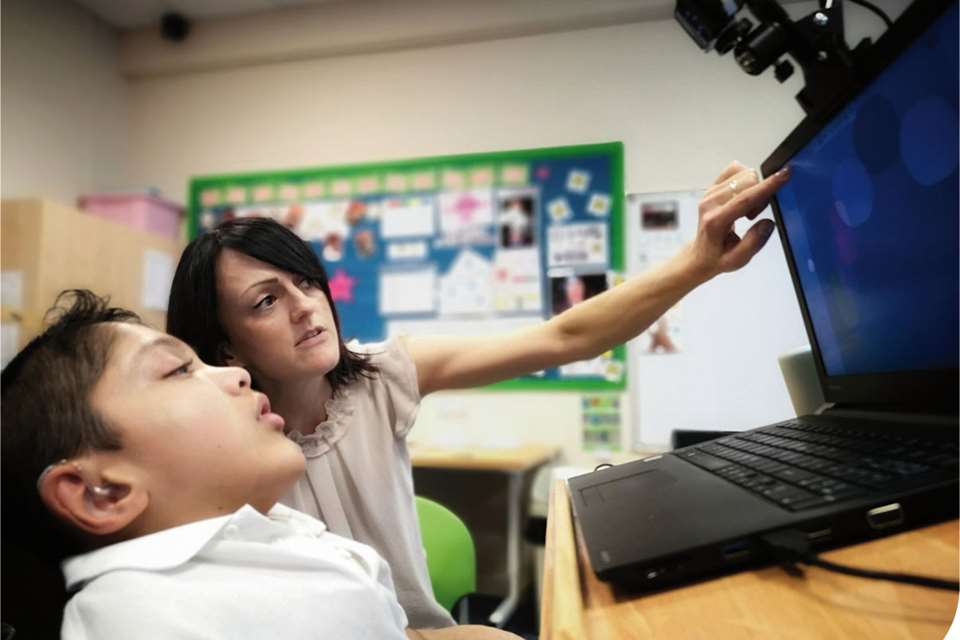Kris Halpin interview: The gloves are on
Hattie Fisk
Monday, August 1, 2022
Fighting against disabling barriers for musicians of all ages, Kris Halpin is utilising the technology of the future to show that new pathways are possible, as Hattie Fisk discovers.
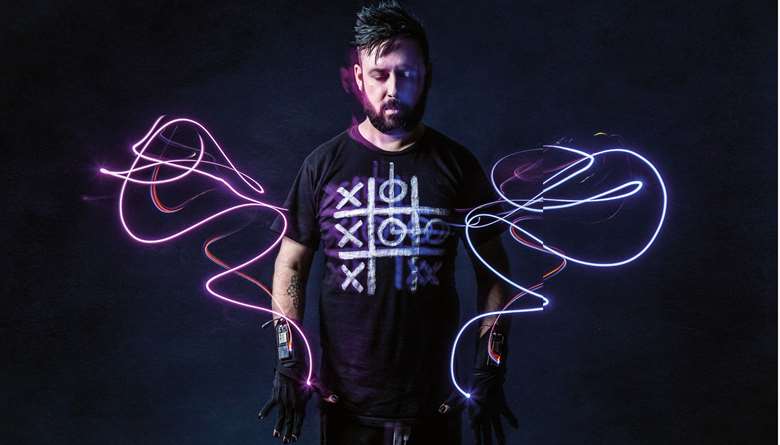
Josefa Torres
For many young disabled musicians, a fundamental barrier can be obtaining an accessible musical instrument. Having an instrument that moulds to your own abilities, rather than attempting to mould yourself to the constraints of a piano, flute or clarinet, can make all the difference. For some, being able to make music with the slightest movement of a hand would be a dream.
This has become a reality for Kris Halpin, an electronic musician who goes by the stage name Dyskinetic, who uses a pair of Mi.Mu Gloves to create and perform music. A prominent figure and blogger in the world of accessibility and inclusion in music education, Halpin describes himself as a disabled musician, not because he has cerebral palsy, but because is ‘disabled by the barriers that society presents him with’. When discussing the impact of our current society on his life, Halpin makes one thing clear: ‘I would not say I have a disability – that is not the language I would use at all. I have a health condition that impacts on my life quite a lot, sure. But I am disabled by the barriers that society presents. I am not the problem that needs to be solved.’
Halpin calls me from his office – his microphone is crisp, his camera sharp, and he is surrounded by an array of tech accessories and gadgets. However, he assures me it wasn't always this way. Before his work in electronic music, Halpin loved the natural strums of his local legend Nick Drake, and pined after the skill required to play acoustic guitar at that level. He desperately wanted to master the guitar, but the dexterity of his fingers presented a significant barrier to him achieving this, launching Halpin on an epic journey to find an alternative.
The early years
In school, Halpin faced significant challenges. At 14, he was quietly removed from mainstream piano lessons because of the limited dexterity in his right hand; rather than changing the framework around the lessons – the attitude in his school at the time relied on the medical model rather than the social model of disability – the ‘problem’ was placed at Halpin's feet, rather than his teacher's.
At a certain point in his school years, Halpin's cerebral palsy meant that he was unable to walk up the stairs. There was no elevator, so he was confined to the classrooms on the bottom floor of the building. As luck would have it, that was also the year that the music room moved to the ground floor – without that fluke, Halpin would have been unable to take his GCSE Music. ‘I didn't really put my mind to anything at school other than music,’ he says. ‘School was totally rubbish for me.’ Neol Davies from The Selecter – a band from the ‘90s Coventry-based Two-tone scene – happened to be working with Halpin's local music service, so he received formative training from him, strengthening his resolve and spurring him on to become a professional musician.
After leaving school, Halpin struggled to make it as a singer and songwriter, with all the exciting venues in Birmingham – the nearest city to him – being inaccessible, such as in basements or places with lots of stairs. Alongside practical hurdles, he also faced attitudinal barriers: ‘People thought it was a bit weird that a disabled person would want to be a musician.’
Around eight years ago, he began to face even bigger obstacles as his hand impairment became worse, and he was struggling to access the guitar. Despite this coming at a point in his career where he was gaining recognition, with his music getting plays on BBC Radio 6 Music by Tom Robinson, he felt like giving up. ‘I couldn't be the only disabled musician that was facing barriers – I knew that,’ Halpin says, ‘but I grew up in a tiny village in the far outskirts of Birmingham and I was the token disabled musician in my school. I didn't know any other disabled people, let alone any other disabled musicians.’ Out of desperation, Halpin took to Twitter, and was directed to London charity Drake Music – leaders in accessible music technology. Gawain Hewitt, the technologist there at the time and a London-based producer, listened to Halpin's work and decided to get him on board.
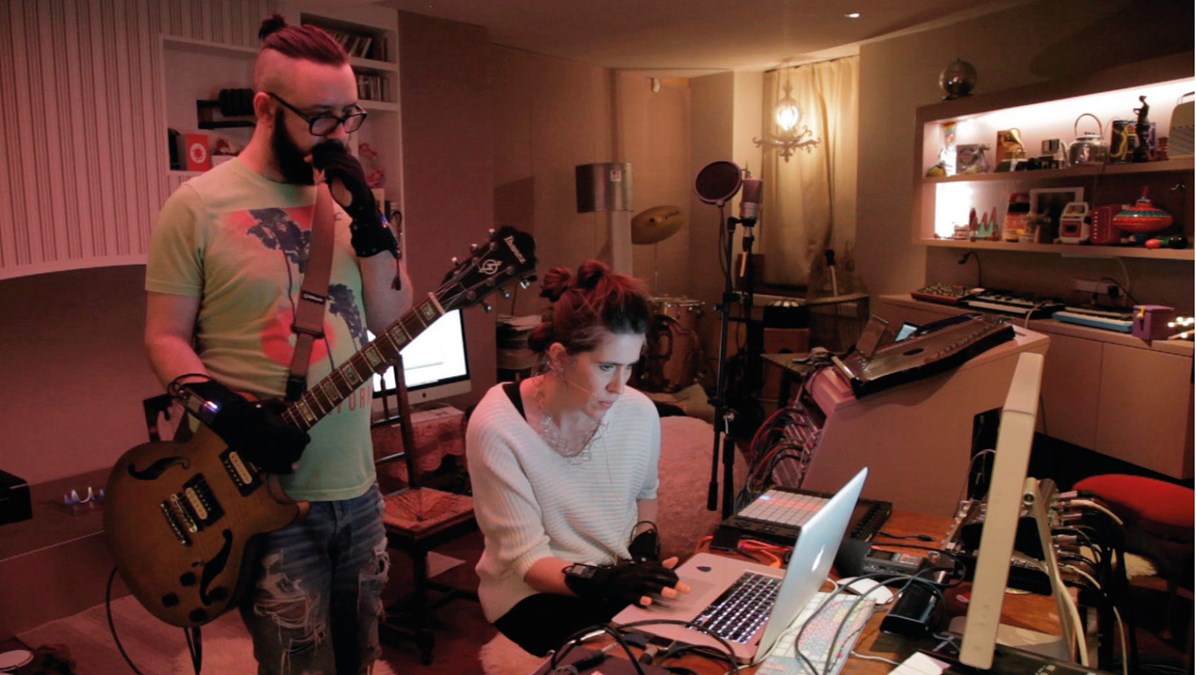 Kris Halpin in studio with Imogen Heap © LEE COGSWELL
Kris Halpin in studio with Imogen Heap © LEE COGSWELL
The technology
At around the same time, Grammy award-winning singer-songwriter Imogen Heap was trying to solve a problem she faced when performing electronic music live. As she put it, when singing with a laptop on stage, for all the audience knows, she is just checking her emails – there is no way for anyone watching to see where the music is coming from and ‘it wasn't expressive or visualised’, as Halpin explains. Heap thought that a wearable glove was the way to do that, and after seeing a demo at the MIT Technology Review event, she gathered a team of experts, including Hollywood designers and NASA engineers, to put the gloves together.
While Heap had achieved her aim, Hewitt and Halpin realised that she had also accidentally invented an incredible bit of wearable technology that learns the user rather than the other way around, producing the ultimate example of the social model approach to disability.
There were 15 pairs of gloves made; one of them famously went to Arianna Grande who used them extensively on her Honeymoon tour, and a bunch of them went to Imogen Heap fans who wanted to meet her (part of the package when buying the gloves). However, one pair went to Drake Music, who bought them for Halpin. ‘I thought I would have a go; I would get a blog post out of it, and then give them back. But that is not what happened at all.’
One of the most amazing things about the Mi.Mu Gloves is that, despite also being suitable for beginner musicians, they offer musicians the opportunity to excel on the instrument (the gloves themselves). ‘This is the first accessible technology that has the scope for virtuosity,’ says Halpin. ‘You can get good at it, and you can get really, really good at it. You can have a discipline and you can map that discipline onto the gloves.’ Heap and Halpin have mastered this technology, which has allowed them to follow a steep learning curve and be the greatest Mi.Mu Gloves players out there (so far). Now, Dyskinetic has travelled around the world, performed on tours, produced an array of music, and developed a following – all enabled by the Mi.Mu Gloves. He can punch the air and produce a drum sound, loop atmospheric electronic hums with a wave of a hand, and play literal air guitar, all with this technology.
Tic-Tac-No
There are, of course, two layers to accessibility here: firstly, how easy the instrument is for those with disabling barriers to use, and secondly how easy the instrument is to get hold of. ‘This has always been a sticking point,’ says Halpin. ‘We want to recognise that this was a solution for me, but I was really lucky.’ For many, a £5,000 pair of gloves may not be the answer, and there is a long way to go to change the current system.
Labelling himself a ‘white, middle-class dude’, Halpin acknowledges that he almost has the ‘full set’ of privileges. ‘As soon as you have an intersectional experience it gets so much more complicated,’ he says. In an upcoming gig, the details of which are yet to be announced, Halpin will be platforming a new disabled artist who he has been mentoring through Drake Music, called Elle Chante. ‘She is an awesome electronic singer/songwriter, but her experience of being disabled is even more complex,’ Halpin says. ‘It is not my story to tell, but being a woman who is disabled is an extra challenge, and being a Black artist adds another layer of complication. It's dreadful that this is still the case.’
Tattooed on his forearm, and spread on Dyskinetic T-shirts, is Halpin's logo. He calls it the ‘tic tac no’ – a noughts and crosses grid, with a line in an L shape through the noughts, ignoring the clear chain of three crosses on the left side. Halpin made the logo in art college as a statement about social attitudes towards doing the ‘right’ thing. ‘In life, there are things that are so blatantly wrong that we all accept – like disabling barriers. We know they are there, but we don't do anything about it – just like how the wrong answer here is marked off as being right.’ The symbol has taken on a life of its own now, with many Dyskinetic fans wearing it publicly or posting it online.
Lasting challenges
The story of Halpin excelling with this new music technology is amazing, and certainly provides inspiration to so many young people who may have been told that music is ‘not for them’. However, this is not a one-size-fits-all situation. It goes without saying that not all young disabled musicians face the same physical barriers as Halpin does. And even for those who do, they may not be lucky enough to be offered a pair of Mi.Mu Gloves.
‘I was an ambitious musician with really no opportunities – largely due to disabling barriers,’ concludes Halpin. ‘But the right people and the right tools came along at the right time and empowered my career to a point where I have literally travelled the world and it is my full-time job. But that cannot be a unique case. It doesn't really mean anything if one person does okay in this. I am not the token disabled person. We desperately need to actually change this at a systemic level and make things more accessible for young people.’


